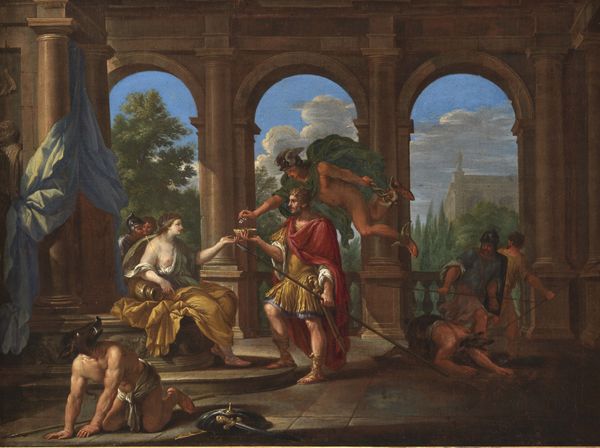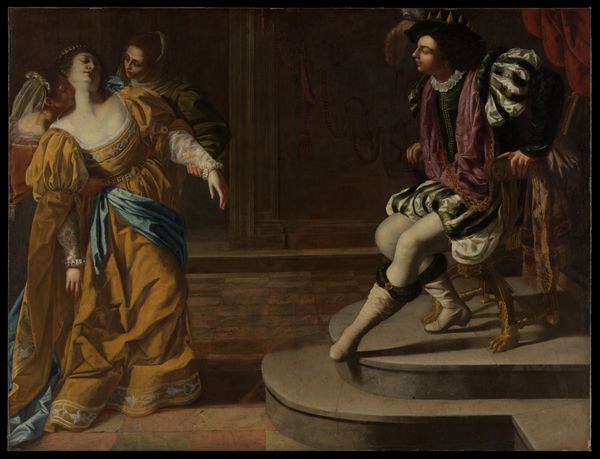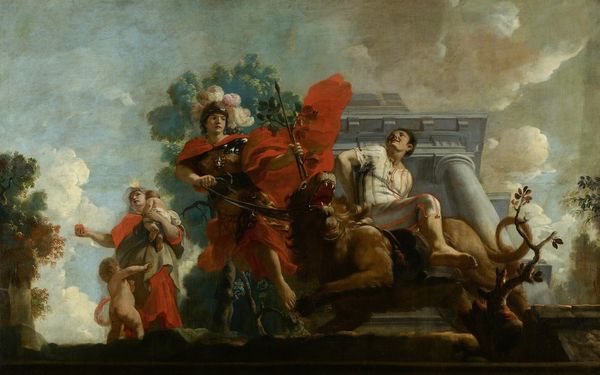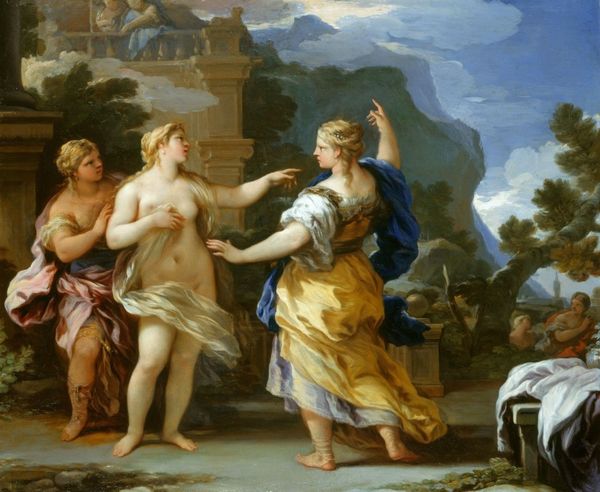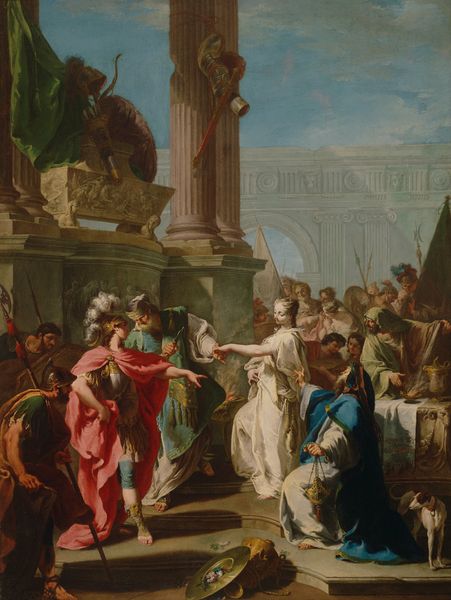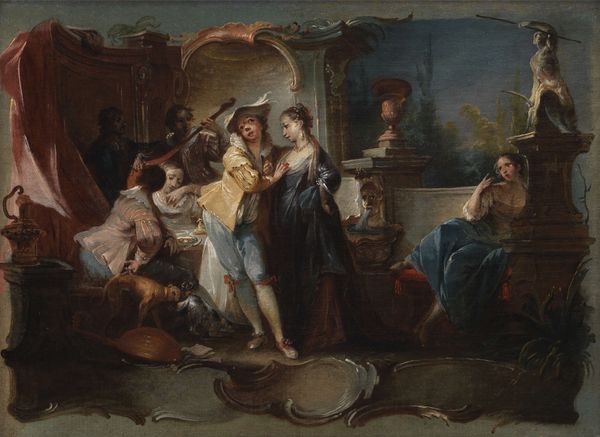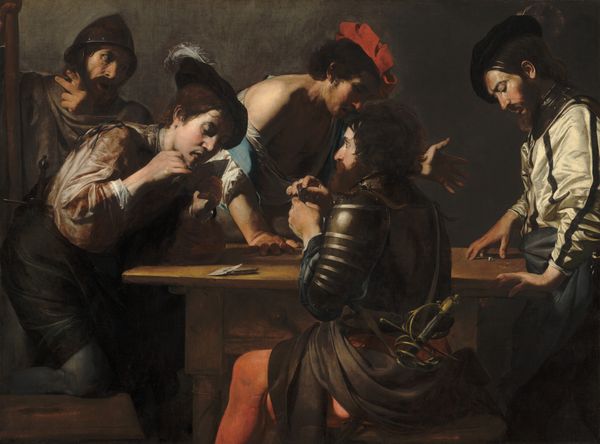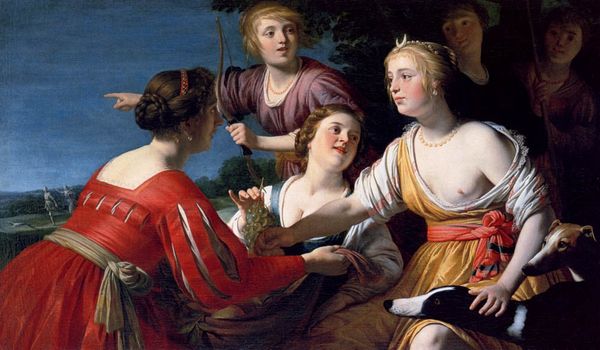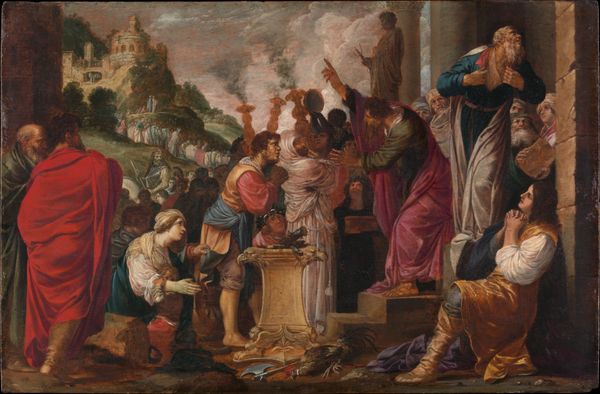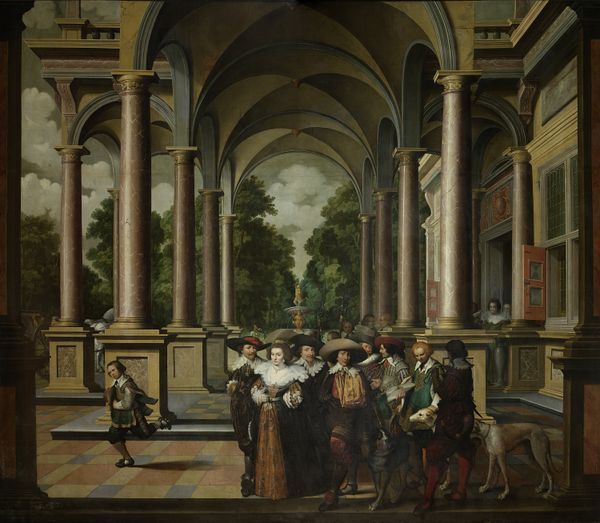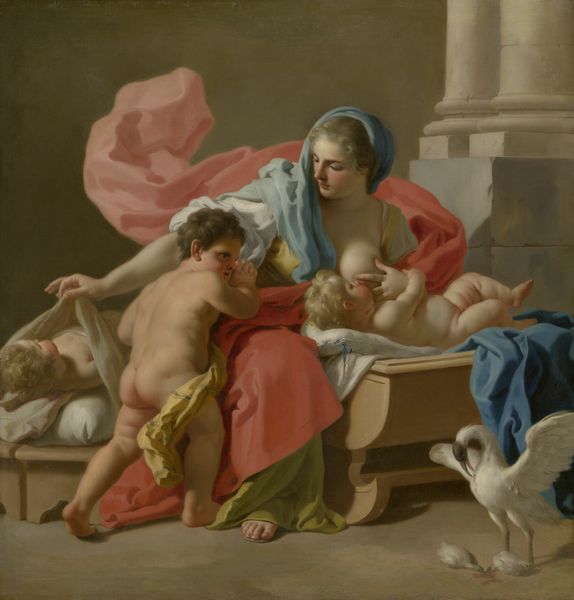
painting, oil-paint
#
portrait
#
allegory
#
baroque
#
painting
#
oil-paint
#
figuration
#
oil painting
#
history-painting
Dimensions: 55 7/8 × 40 1/8 in. (141.9 × 102 cm)
Copyright: Public Domain
Editor: This oil painting by Laurent de La Hyre, created between 1631 and 1634, is titled "Panthea, Cyrus, and Araspas." The characters are attired with vibrant turbans, the scene's figures stand against a distant camp backdrop. It almost feels like theater. I’m immediately drawn to the exotic costumes and the way they command such a prominent presence within the architectural space. What story do you think the painting's trying to tell? Curator: Well, seeing this piece, it's important to acknowledge the fascination 17th-century European audiences held with the 'Orient'. La Hyre taps into this by referencing Cyrus the Great, the Persian Emperor from Xenophon's *Cyropaedia*. However, he's also using this historical setting to address contemporary issues surrounding morality, leadership, and desire. The composition and costuming are consciously exoticizing. How do you see this orientalism playing out? Editor: I suppose there’s an inherent power dynamic at play. The costuming seems to 'other' these figures, framing them within a European context. Do you think La Hyre's trying to critique or endorse that dynamic? Curator: It’s complex. La Hyre probably intended neither pure critique nor endorsement. Instead, the painting likely invited viewers to reflect on notions of honor, duty, and self-control – values often discussed within elite European circles. Consider where this piece might have been displayed - likely a wealthy patron's home, subtly reinforcing cultural assumptions even while showcasing a supposedly 'foreign' narrative. Editor: It’s fascinating to see how the painting acts as a mirror reflecting its own society's values and prejudices back at itself through this constructed Orientalist lens. Curator: Precisely! It serves as a reminder that representations of the past, even seemingly distant ones, are always mediated by the concerns of the present and reveal a great deal about the power structures in place when and where the artwork was produced and first viewed. Editor: I hadn’t considered how profoundly the audience and context would affect the message itself. Thank you!
Comments
No comments
Be the first to comment and join the conversation on the ultimate creative platform.
